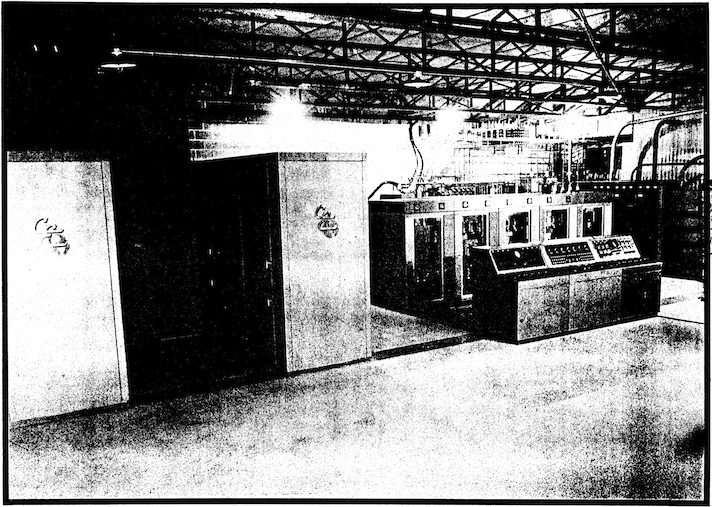| TECHNICAL SPECIFICATIONS |
| Carrier Output Power |
1/2 megawatt |
| Type of Emission |
A3 Telephone (with provision for certain other types) |
| Frequency Range |
5.9 to 22 megacycles |
| Frequency Stability (Crystal Oscillator) |
0.003% |
| Type of Modulation |
Grid bias in penultimate stage |
| Type of Power Amplifier |
Linear High Efficiency |
| Output Impedance |
300 ohms balanced |
| Audio Frequency Impedance |
150/600 ohms |
| Audio Frequency Input Level |
+10 dbm ±2 db |
| Modulation Capability |
From 50 to 10,000 cycles: 100% |
| Power Consumption |
Unmodulated: 1100 kw
100% Modulation Level: 1600 kw |
| Power Line Requirements |
4160 volts, 60 cycles, 3 phase 3 wire |
| Instantaneous Regulation of Power Source |
Not to exceed 5% |
| Voltage Variation |
Not to exceed 5% |
| Audio Frequency Response |
Uniform within ±1 db from 30 to 10,000 cycles |
| Residual Carrier Noise |
54 db below 100% modulation |
| Audio Frequency Distortion |
Less than 5% |
| Maximum time required for Frequency Change |
3 minutes |
| Specifications may change without notice |
 The Type 420A transmitter has been designed for AM operation in the International Shortwave Broadcast Band from 5.9 to 21.75 megacycles with an output power of 500,000 watts carrier, to which modulation of 100% may be applied.
The Type 420A transmitter has been designed for AM operation in the International Shortwave Broadcast Band from 5.9 to 21.75 megacycles with an output power of 500,000 watts carrier, to which modulation of 100% may be applied.